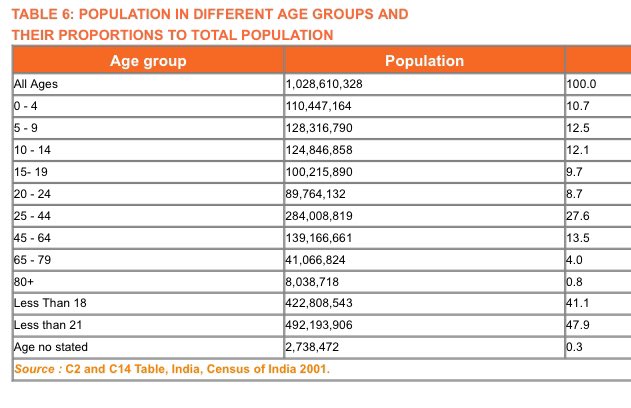Read this thread and then read about Belgian system(secondary) https://en.wikipedia.org/wiki/Education_in_Belgium
And">https://en.wikipedia.org/wiki/Educ... the German school system here https://en.wikipedia.org/wiki/Education_in_Germany
What">https://en.wikipedia.org/wiki/Educ... @svembu is suggesting is to ensure most children completing (vocational) schools join workforce immediately. https://twitter.com/svembu/status/1308199671156752384">https://twitter.com/svembu/st...
And">https://en.wikipedia.org/wiki/Educ... the German school system here https://en.wikipedia.org/wiki/Education_in_Germany
What">https://en.wikipedia.org/wiki/Educ... @svembu is suggesting is to ensure most children completing (vocational) schools join workforce immediately. https://twitter.com/svembu/status/1308199671156752384">https://twitter.com/svembu/st...
My main concern with NEP 2020 is that we have not shifted to the pure vocational school education system.
What we now are doing is to ask all students to learn one job.
No, we don’t want that. What we instead want is to allow students to choose as early as 12 years to choose path
What we now are doing is to ask all students to learn one job.
No, we don’t want that. What we instead want is to allow students to choose as early as 12 years to choose path
What @DrRPNishank failed to deliver is a full vocational route for education, with an optional bridge course for those who pursued vocational schools to pursue academic studies later.
Essentially a German-like model.
Essentially a German-like model.
The reason why our traditional guru-shishya paramparA had worked is because we were training students from a very young age. When they complete education, they were ready for jobs.
They could pursue specialisations under various gurus.
They could pursue specialisations under various gurus.
What we want is a set of schools that allow students to directly enter skilled jobs.
What we want is companies/proprietorships to hire students for job at age 15-18.
What we want is 50+% of students to enter workforce directly out of schools.
What we want is companies/proprietorships to hire students for job at age 15-18.
What we want is 50+% of students to enter workforce directly out of schools.
Only about 35% students really need to pursue higher education. If we look at number of students in professional education now, it’s about that number.
Or less than 3.5 crore people each year.
Or less than 3.5 crore people each year.
We don’t need bloated marks for 6.5 Cr students.
A significant number has already dropped out.
What we want for them is enough basic education so that they can enter job right away.
Some of them may want to pursue higher education later. We can enable that through open education
A significant number has already dropped out.
What we want for them is enough basic education so that they can enter job right away.
Some of them may want to pursue higher education later. We can enable that through open education
Of the 3.5 Cr, various professions are only having job opportunities in lakhs.
What are these people doing? What education is required for these people?
What is NEP offering them.
What are these people doing? What education is required for these people?
What is NEP offering them.
Let’s say sector X employs N lakh people.
Right now, govt doesn’t even have this mapping of X:N.
Next, let’s say annually M people join X.
We don’t know what the value of M is for any sector.
Right now, govt doesn’t even have this mapping of X:N.
Next, let’s say annually M people join X.
We don’t know what the value of M is for any sector.
Government doesn’t have data for the organised sector.
93% of Indian work force is unorganised.
Government has no idea what these people are doing.
93% of Indian work force is unorganised.
Government has no idea what these people are doing.
I don’t expect us to come up with a good education policy that reflects ground reality as long as our own government is unaware of what it’s citizens actually do for a living.
Even if government decided to categorise people, we do not know how many categories are there.
Even if government decided to categorise people, we do not know how many categories are there.
Our Education sector is in shambles because we don’t know that we don’t know.
To know what we don’t know, we will need at least 2-3 iterations(decades) of job census data.
To tailor an education policy we will need another 2-3 decades.
To actually see the results, we need 2 more.
To know what we don’t know, we will need at least 2-3 iterations(decades) of job census data.
To tailor an education policy we will need another 2-3 decades.
To actually see the results, we need 2 more.
Use of technology and a robust National Citizen Registry could probably help us do all this in 4-5 decades instead of an optimistic 6-8 decades.
A dedicated effort with zero politics may help us fix things in 3 decades.
A dedicated effort with zero politics may help us fix things in 3 decades.
I think I should have tagged this thread as #Education.
The thing is, this can’t be achieved by one @RahulGandhi or one @narendramodi or one @SitaramYechury.
This is a multi-generational project. Getting things done in two generations is a bhageerata effort.
The thing is, this can’t be achieved by one @RahulGandhi or one @narendramodi or one @SitaramYechury.
This is a multi-generational project. Getting things done in two generations is a bhageerata effort.

 Read on Twitter
Read on Twitter


